The Right Way to Use Retinol Under Your Eyes, According to Dermatologists
“Around the eyes, [retinol] can help improve fine lines like crow’s feet, some skin laxity, and under-eye circles, depending on their causes,” says Dr. Yadav. All to say: Retinol is powerful stuff, and while potent, it must be used with care. “Though retinol is packed with benefits, it’s also known for its ability to cause irritation and dryness,” she says, and with this in mind, you’ll want to be cautious about using it on the skin around the eye area, which is among the thinnest on your face. Many retinol moisturizers for the face contain higher concentrations of the ingredient that is much too harsh for your eyes, which can lead to unwanted redness, irritation, and peeling—and these side effects can be painful, especially for people with sensitive skin.
Fortunately, a product specifically formulated for use around the eyes will let you reap all the benefits without risking irritation. As board-certified dermatologist and CEO of GFace Gretchen Frieling, MD, tells Well+Good: “These usually contain lower concentrations [of retinol] and are more hydrating than what you use on your face.” With this in mind, we asked Dr. Frieling and Dr. Yadav, along with four other dermatologists for tips on choosing a retinol for under the eyes.
What Makes an Ideal Retinol for Under the Eyes?
Ingredients
If you want to offset potential irritation from retinol, you’ll want to use a formula that factors moisturizing ingredients like humectants such as hyaluronic acid and glycerin (“to draw water into the skin,” says Dr. Yadav) and ceramides (“to help nourish skin, prevent water loss, and strengthen the skin barrier,” she says). Board-certified dermatologist Shereene Idriss, MD, also pointsto “shea butter,” in addition to the aforementioned.
- Geeta Yadav, MD, board-certified dermatologist and founder of FACET Dermatology
- Gretchen Frieling, MD, Boston-based dermatopathologist and founder of GFaceMD
- Joshua Zeichner, MD, director of cosmetic and clinical research in dermatology and associate professor of dermatology at Mount Sinai Hospital
- Marisa Garshick, MD, FAAD, board-certified dermatologist at MDCS Dermatology and assistant clinical professor of dermatology at Weill Cornell Medicine
- Nava Greenfield, MD, board-certified dermatologist at Schweiger Dermatology Group in New York
- Rachel Nazarian, MD, FAAD, board-certified dermatologist at Schweiger Dermatology Group in New York
- Shereene Idriss, MD, board-certified dermatologist
Looking for options with anti-inflammatory ingredients is also important if your skin is on the sensitive side. “Eye creams that contain additional anti-inflammatory ingredients make the overall product more tolerable, as this area is one of the ‘uber-sensitive’ areas of the face,” says board-certified dermatologist Rachel Nazarian, MD, FAAD. Dr. Yadav agrees, and cites plant extracts, like centella asiatica, aloe vera, and licorice, as prime examples that help mitigate irritation.
Dr. Nazarian and Dr. Yadav both also recommend options that pair retinol with niacinamide, an ingredient that board-certified dermatologist Marisa Garshick, MD, previously described as a “supporting cast member” that works better with other ingredients. “When used in combination with retinol, it improves the tolerability both visibly and functionally of the retinoid,” she told Well+Good.

{{post.sponsorText}}
While pairing retinol together with some ingredients can be beneficial, it can lead to more harm when it’s combined with certain other ingredients.
“You’ll likely want to avoid a retinol eye cream that contains alpha-hydroxy acids and beta-hydroxy acids, as these ingredients are sensitizing on their own and can be especially irritating when combined with retinol,” says Dr. Yadav. Additionally, according to Dr. Nazarian: “Avoid harsh cleansers and scrubs, which can decrease your skin’s tolerability, and avoid other drying ingredients or ingredients that decrease oil production, such as glycolic acid and chemical exfoliants.”
Forms and Concentrations of Retinol
Retinol under-eye treatments have different concentrations, from about 0.005 to 0.1 percent, says board-certified dermatologist Nava Greenfield, MD. Lower concentrations are less potent, while higher concentrations are stronger but more likely to cause irritation in some individuals. There are also other options that are better suited for people with sensitive skin or who are pregnant or breastfeeding. For one, Dr. Yadav recommends bakuchiol. “Bakuchiol is a plant-based retinol alternative that is proven to offer the same benefits of retinoids but without the same irritation or risk,” she says.
Fragrance-Free Formulation
Fragrance, whether naturally or synthetically derived, can irritate the skin, and with this in mind, Dr. Greenfield recommends a fragrance-free eye cream if possible and particularly if you have sensitive skin.
What To Keep in Mind When Using a Retinol Under the Eyes
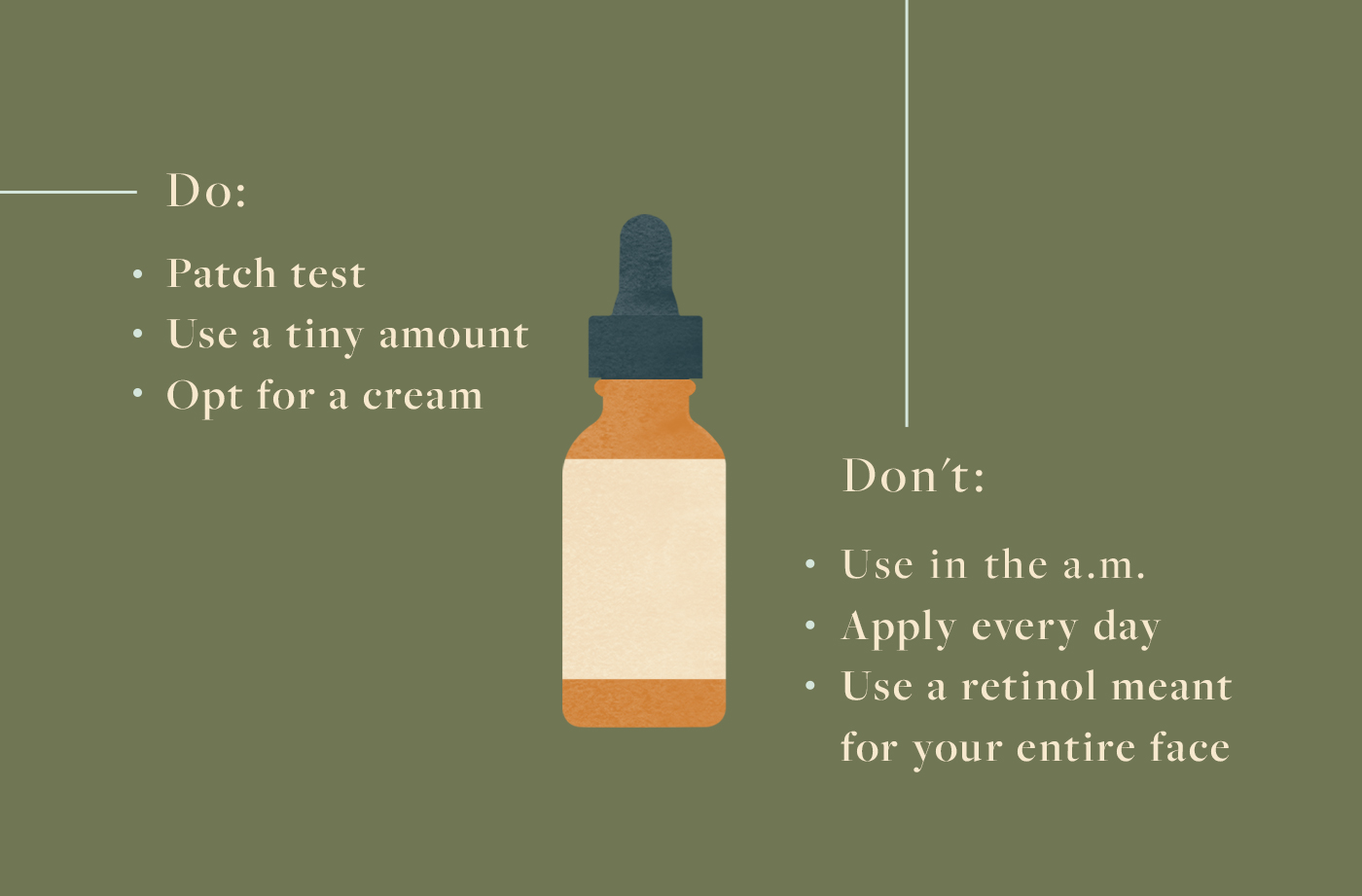
“If you’ve never used retinol before, you’ll want to ease into applying it lest you oversensitize the skin,” says Dr. Yadav. Her recommendation for retinol usage? “Apply it in the evening, starting with a once weekly application as your skin learns to tolerate it, working your way up to twice weekly, then three times, and so on until you’re up to nightly application.”
Be sure to follow the packaging instructions, too. “Most retinol eye creams recommend applying nightly,” says Dr. Idriss. “And as always follow up with SPF the next morning.” Dr. Greenfield agrees, adding: “Make sure you’re wearing sunglasses on top of that because [retinol] will make you more sensitive to sunlight.” And as with many skin-care products, consistency is key. “It takes about three to six months to see results, so it’s important to stay committed and be diligent with your regimen,” says Dr. Nazarian.
While most ofthe dermatologists we spoke to recommend using a retinol eye cream, board-certified dermatologist Joshua Ziechner, MD, mentions that it isn’t always necessary to invest in a dedicated product for this purpose. “You can use a retinol-based cream around the eye area,” he says. “You can begin by mixing your retinol with a moisturizer,” adds Dr. Frieling. “A little goes a long way—use a pea-size amount for the entire eye area.”
It’s also worth noting that retinol isn’t for everyone—and if you have eczematous or particularly sensitive skin or a damaged skin barrier, Dr. Zeicher recommends opting for an alternative. “If retinol eye creams aren’t for you, look for eye creams formulated with peptides to target fine lines and wrinkles,” says Dr. Idriss. People who are pregnant or breastfeeding will also want to avoid retinol, and aspreviously mentioned by Dr. Yadav, you can use a retinol alternative like bakuchiol.
In any case, the American Academy of Dermatology recommends performing a patch test up to 10 days in advance if you’re using a new product and/or unsure of potential allergies. To help you narrow down your choices, you’ll find six retinol eye creams, all recommended by dermatologists, ahead.
Retinol Under-Eye Creams Recommended by Dermatologists
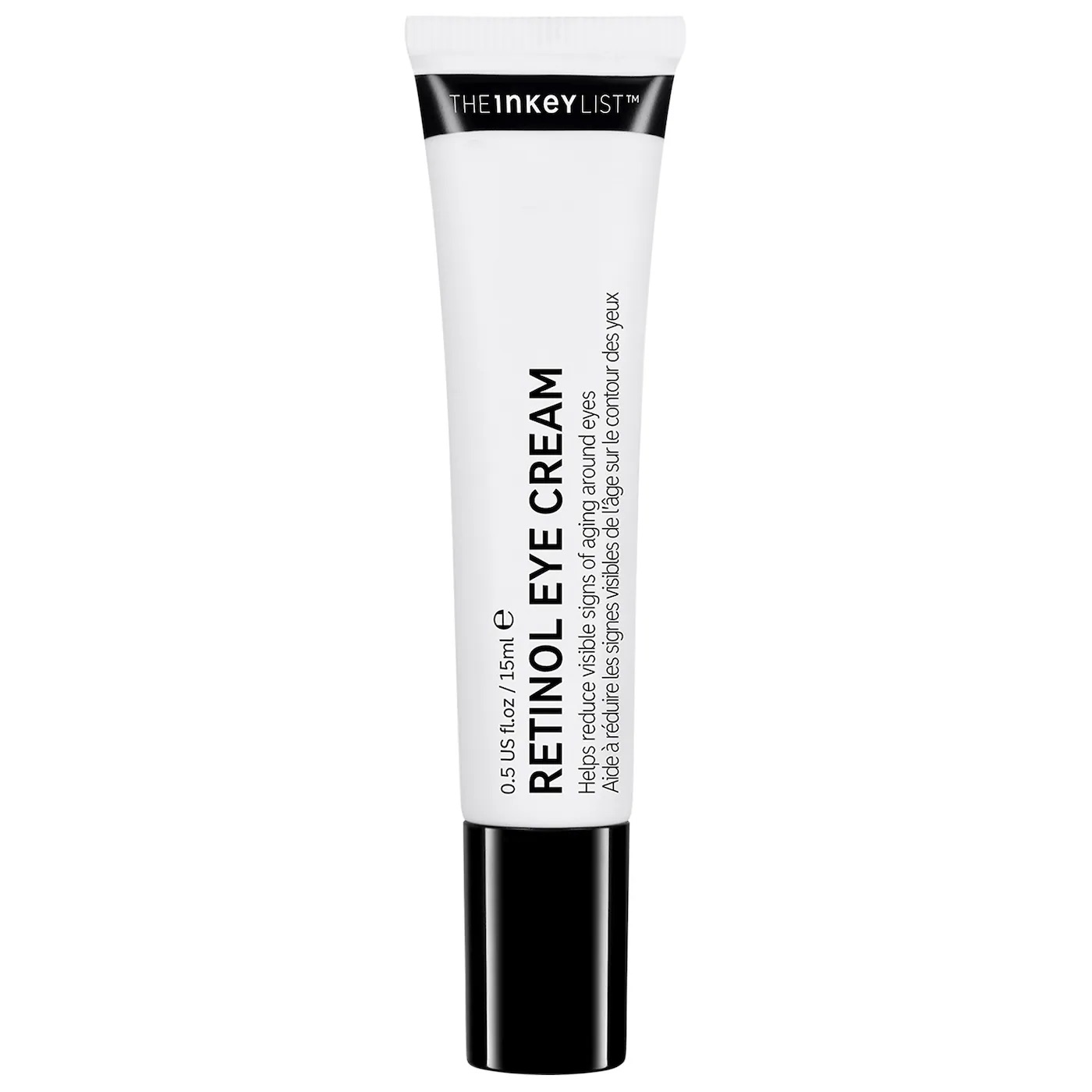
Active ingredients: retinol, hyaluronic acid, vitamin C
The Inkey List Retinol Eye Cream recommended by both Dr. Idriss and Dr. Greenfield, thanks to its inclusion of moisturizing ingredients like hyaluronic acid and shea butter. It’s formulated with a slow-release retinol at a concentration of 0.09 percent that stimulates collagen production and cellular turnover while also reducing the risk of irritation. In addition, it also contains vitamin C to reduce hyperpigmentation and protect against the damaging effects of environmental stressors, like UV and light pollution.
Fragrance-free: Yes
Size: 0.5 fl. oz.
Pros:
- Made with several moisturizing ingredients
- Budget-friendly
Con:
- Results take time
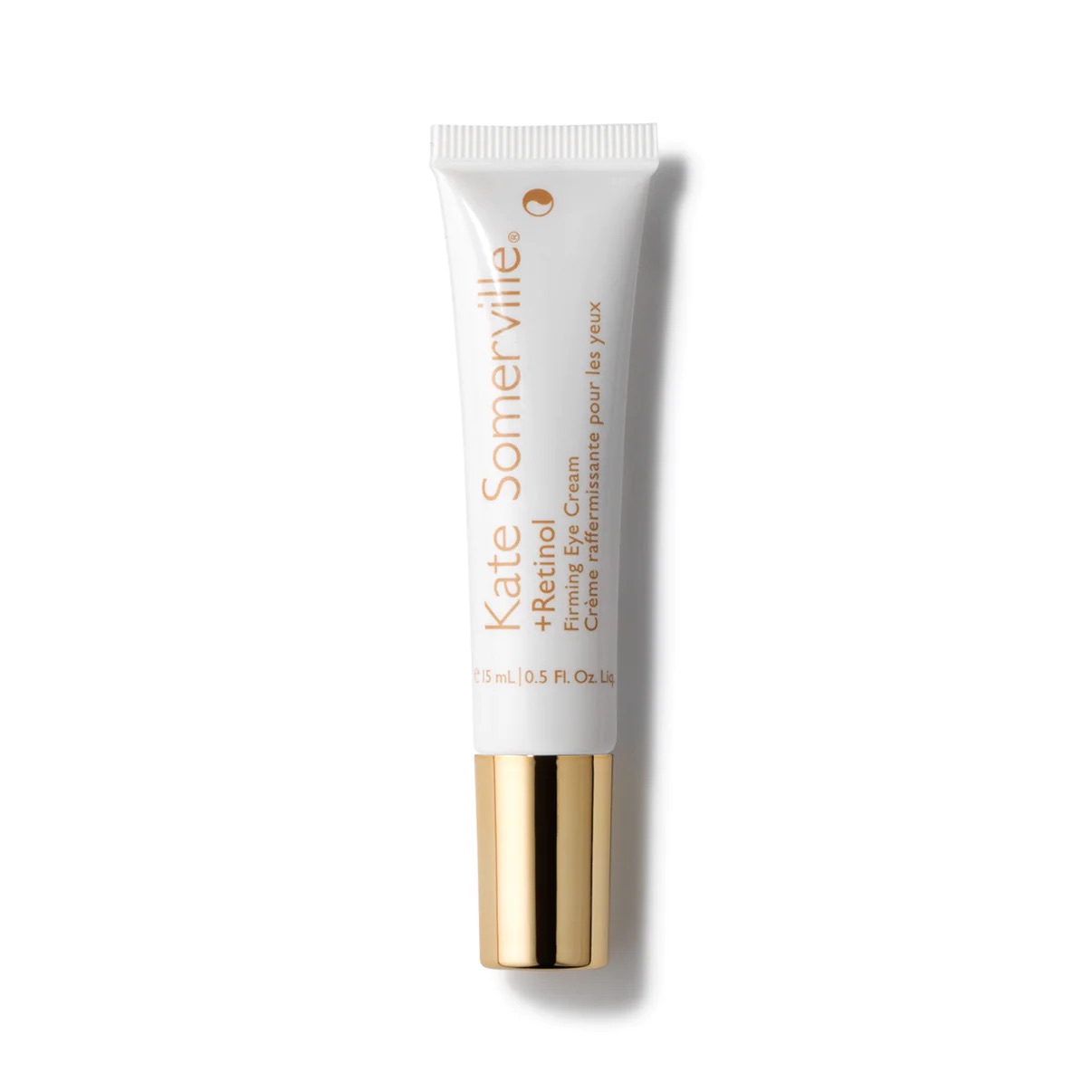
Active ingredients: retinol, bio-retinol, hyaluronic acid
Another recommendation from Dr. Idriss, the Kate Somerville +Retinol Firming Eye Cream combines retinol and bio-retinol (derived from babchi seeds, which is also used to make bakuchiol) that work to encourage cellular turnover and collagen production. The product is also backed by a clinical study that shows it’s largely effective at improving skin smoothness and firmness within four weeks of use. Dr. Idriss also calls out the metal tip applicator that works to massage built-up fluid that may contribute to puffiness.
Fragrance-free: Yes
Size: 0.5 fl. oz.
Pros:
- Formulated with two types of retinol
- Metal tip applicator reduces puffiness
Con:
- Pricey
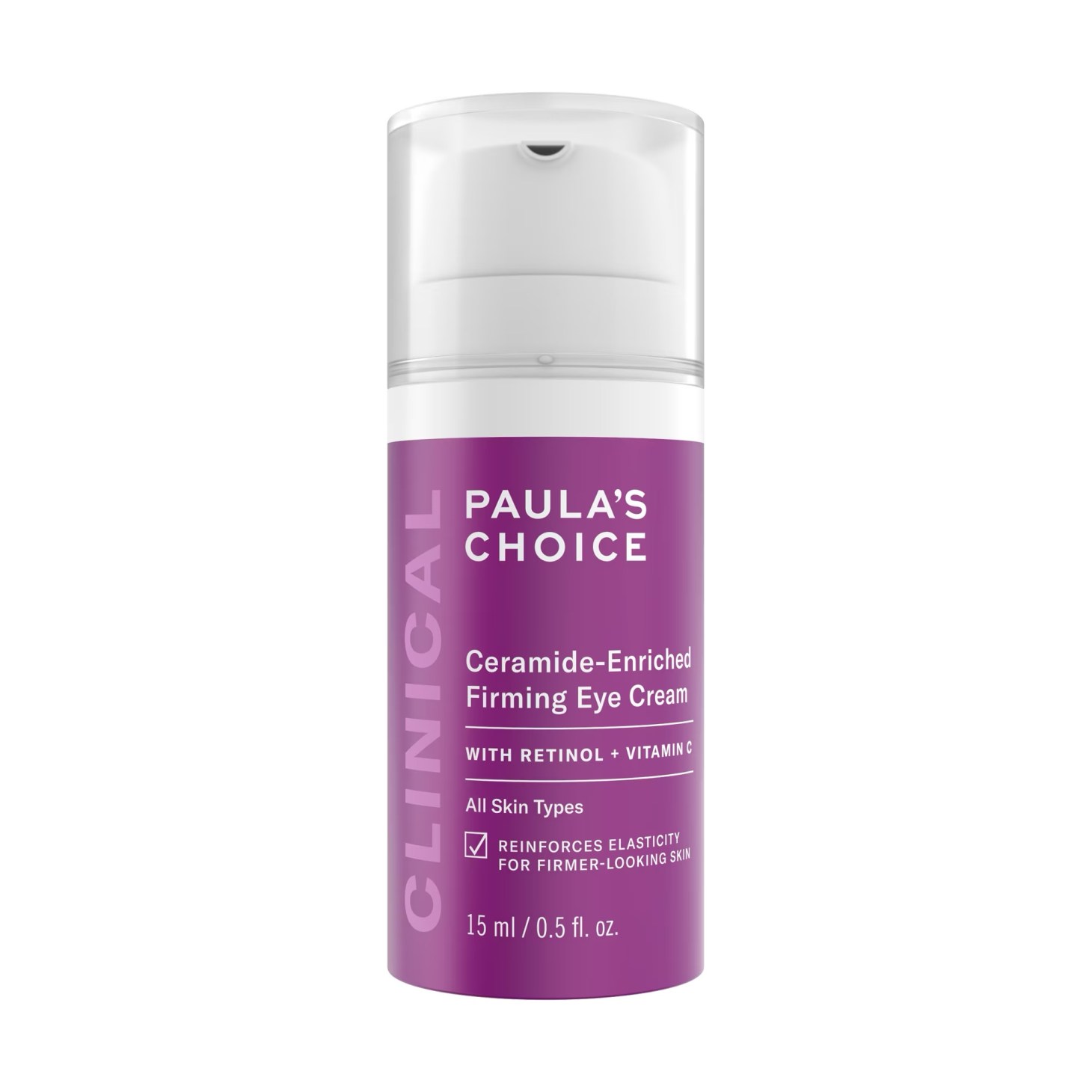
Active ingredients: retinol, vitamin C, ceramides, peptides, squalene
There are a few reasons why Dr. Yadav loves this eye cream from Paula’s Choice. “It features retinol and peptides to help firm and strengthen skin, vitamin C to help brighten and stimulate further collagen production, and multiple forms of ceramides to nourish and moisturize,” she says. Plus, the retinol is formulated at a 0.01 percent concentration, meaning that it’s not overly potent for the delicate under-eye area.
Fragrance-free: Yes
Size: 0.5 fl. oz.
Pros:
- Ideal for sensitive skin
- Formulated with several moisturizing ingredients
Con:
- Small size for price
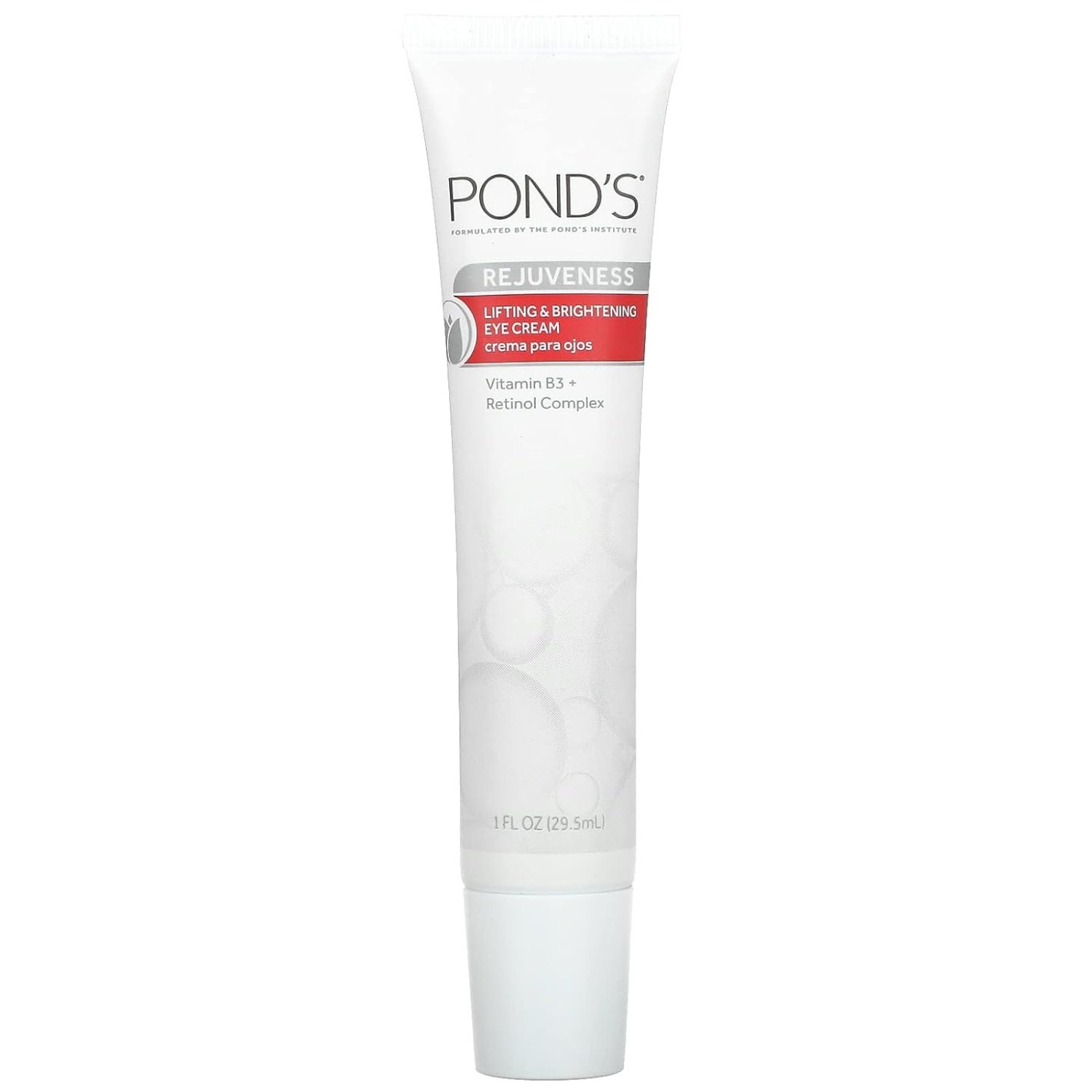
Active ingredients: retinol, niacinamide
If you’re looking for an eye cream that pairs retinol with niacinamide, Dr. Idriss recommends this one from Pond’s. The retinol helps to even out tone and texture, while the niacinamide offsets any potential irritation from the retinol while further reducing hyperpigmentation. The dermatologist-tested formula is also fragrance-free, which means less risk of an allergic reaction.
Fragrance-free: Yes
Size: 1 fl. oz.
Pros:
- Dermatologist-tested formula
- Made with anti-inflammatory niacinamide
Con:
- Limited retailers
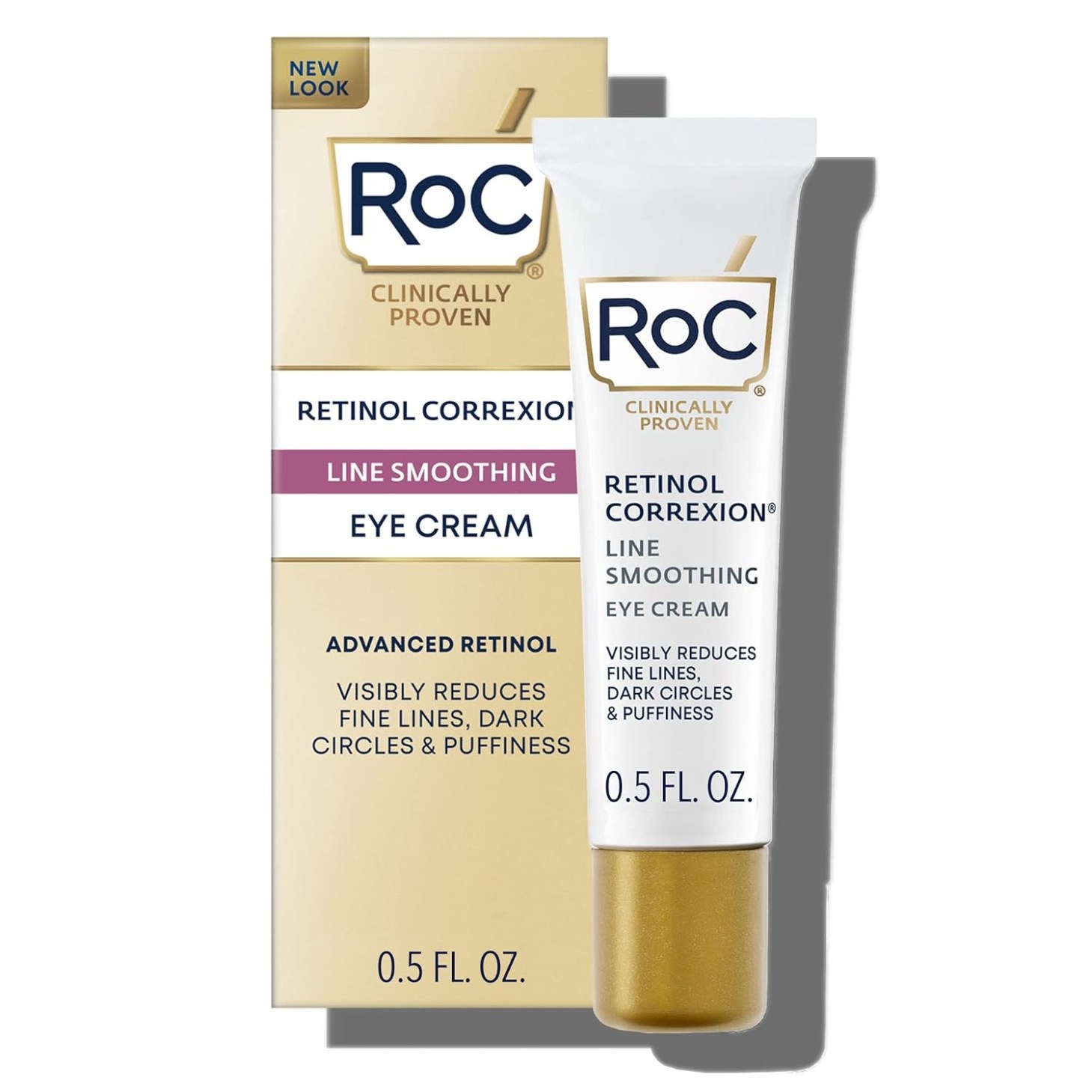
Active ingredients: retinol, vitamin E, glycerin
A recommendation of Dr. Greenfield, the RoC Retinol Correxion Under Eye Cream tackles fine lines, dark circles, and puffiness—and according to the brand, it’s clinically proven to reduce dark circles within 4 weeks and the appearance of crow’s feet within 12 weeks. In addition to retinol, it’s formulated with ultra-hydrating humectant glycerin and vitamin E to soothe the under-eye area and prevent irritation. Plus, it’s “lightweight,” says Dr. Greenfield, adding that it’s ideal for those with oily or combination skin.
Fragrance-free: Yes
Size: 0.5 fl. oz.
Pros:
- Clinically tested formula
- Contains moisturizing and anti-inflammatory ingredients
Con:
- Not ideal for dry skin, according to Dr. Greenfield

Active ingredients: retinal
This eye cream from Avène is formulated with retinal, retinol’s more potent relative. The benefits of retinal are similar in that it helps promote cellular turnover, evens out skin tone and texture, and prevents acne. Plus, one 2018 study found that it can also improve photoaging and reduce transepidermal water loss to increase moisture retention. In addition to retinol, the formula also has moisturizing and anti-inflammatory ingredients. “Hydrating hyaluronic acid and the brand’s proprietary spring water [are] shown to soothe and calm the skin,” says Dr. Yadav, earning the product her stamp of approval.
Fragrance-free: Yes
Size: 0.5 fl. oz.
Pros:
- Formulated with a more potent form of retinol
- Contains moisturizing and anti-inflammatory ingredients
Con:
- Not ideal for sensitive skin
Learn more about why dermatologists love retinol:
- Cheng, Judy, and Kathryn A Zug. “Fragrance allergic contact dermatitis.” Dermatitis : contact, atopic, occupational, drug vol. 25,5 (2014): 232-45. doi:10.1097/DER.0000000000000067
Loading More Posts...